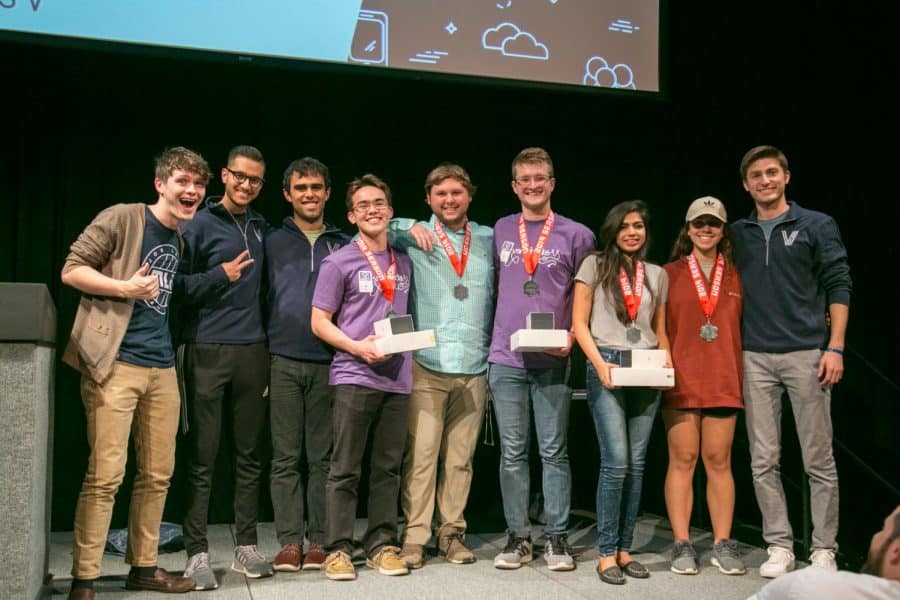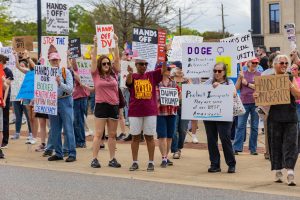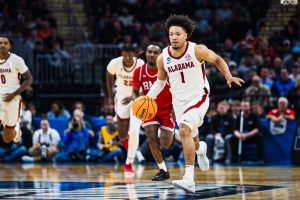UA students win Best Overall at VandyHacks
November 20, 2018
Ben Gitter, a junior majoring in computer science, taught himself to code throughout late middle school and early high school by watching YouTube videos.
“YouTube is one of the most excellent resources for learning how to code,” Gitter said. “YouTube and asking questions. Ask a million, million questions.”
The only time Gitter had a coding class was during his senior year of high school.
Gitter and his team, Seismic Data, won Best Overall and Built for Business awards at Vanderbilt’s annual hackathon called VandyHacks, a collegiate hackathon hosted by Vanderbilt University, on Nov. 4.
Gitter said this win was mainly achieved independently of the University, aside from the UA van provided.
VandyHacks took place over a 36-hour span from Nov. 2 through Nov. 4. The team said 675 people and 97 groups participated from all around the world.
Gitter acted as the leader of the Seismic Data team during VandyHacks, since the Seismic Data project was his idea.
Once the team arrived at Vanderbilt, they signed in and found a spot to set up shop. During the 36 hours, the team members worked on and re-tooled their project, which was an alternative to video surveillance.
“Nobody likes being told what to do,” Gitter said. “The best way to mesh all the gears in a group is to find what everybody is good at. Let them contribute in their sweet spot.”
Gitter said the interesting thing about his team is that none of the members had ever attended a hackathon before.
The team was comprised of Gitter, Patrick Murray, Genevieve Minias, Nehal Vora and James Bertrand.
“I would put it in the simplest terms as an audio-based alternative to video surveillance,” said Murray, a freshman majoring in civil engineering. “It would triangulate someone’s position based on where they’re stepping.”
Murray signed up as a sponsorship executive for CrimsonHacks, an annual hackathon in Tuscaloosa that takes place during the spring semester.
Murray’s position requires him to reach out, travel and find sponsors for CrimsonHacks for the Spring 2019 event.
While working the position, Murray’s sponsorship director encouraged him to attend VandyHacks to get experience on what happens at a hackathon.
“He said, ‘If you’re going to be talking about hackathons, you should have actually been to one so you can be authentic about it,’” Murray said.
Murray attended VandyHacks to witness coding from a distance and to see why it is important to people.
The Seismic Data team insisted that Murray call himself a member, even though he did not code.
“We have five members,” Murray said. “At hackathons you’re supposed to have four.”
The Seismic Data team wanted Murray to get credit for attending VandyHacks so it made an exception with including him as the fifth member.
“It’s a pretty universal thing because they can only give away so many prizes and they usually come in sets of four,” Murray said. “Ben [Gitter] gave up his prize to me because he thought I should get credit.”
The prize was a drone that Murray plans to find an application for at future hackathons he attends.
Murray said he found his use on the team. Some of his responsibilities were acting as a consultant or problem solving to make the team work more efficiently.
Teams at VandyHacks had to write a Devpost, which gives a breakdown of their projects. Murray said he wrote most of the Devpost for Seismic Data.
“Seismic’s use of audio for surveillance is simultaneously more effective and less invasive than video,” the team’s Devpost page said. “By triangulating the origin of every sound impulse traveling through the ground, it can track every moving object within a confined space, regardless of obstacles that would interrupt a camera’s line of sight.”
Gitter said the main language use for the programming is Python, which is not taught at the University.
Minias, a sophomore majoring in computer science, helped build the Python graphics user interface (GUI) for the group’s project.
“Everyone needs to know some basics of coding, honestly within the next decade,” Minias said.
Minias said computer science is important now more than ever before.
“They’ll probably start teaching it in high school for a class or two,” Minias said. “You could probably do it as a language.”
Minias helped to implement the graph and showed how the project worked.
“The plan was that I would be the coder with C++ and [Gitter] would put everything together,” said Vora, a sophomore from Mumbai majoring in computer science and math.
At Vanderbilt, Gitter found Bertrand, a junior majoring in audio engineering at Belmont University, through the communication app Slack. Bertrand worked as the sound engineer for Seismic Data.
“Ben was the main person, Patrick came up with the math and Gen, my friend, was the other C++ coder,” Vora said. “She did a lot with the GUI and the visual representation of the data.”
On the day of the hackathon, Gitter and the team came together on the ride to Vanderbilt. Before that, Minias and Vora did not have a team.
Minias said listening to Gitter talk about Seismic Data on the ride to VandyHacks made their interest in his project idea grow. They were all on the same bus, and they could have found groups to join at Vanderbilt, but they decided to band together once they heard what Gitter had to say.
“Me and Nel [Vora] didn’t have a group at the time and we were just sitting there listening,” Minias said. “We were like, ‘That’s bold of you to want to do a project that that’s crazy.’”
Minias said she and Vora learned Python in an hour the first night they were there and used it to work on Seismic Data for the rest of the weekend.
“We built a device that uses three microphones in a triangulated way to get the sound waves from someone’s footsteps,” Vora said. “With that data, we can know where someone is in a room, how long they’ll be there and what position they’re in. The application for this would be for Wal-Mart and Home Depot and all those big stores that cannot rely on web data.”
Vora said having cameras around stores like this might be an invasion of someone’s privacy.
The Seismic Data project operates anonymously.
“You don’t know who people are, how they look, so there’s no discrimination, there won’t be invasions of privacy,” Vora said. “Companies can still get the data they want.”
The team learned of its win through Slack. The members went into a room to prepare for a presentation to the judges and attendees of VandyHacks.
Gitter said the second award, Built for Business, was for the project with the most potential to be a scalable and profitable startup.
“I just want to emphasize how important what we built was to the future,” Murray said. “Video surveillance is so bad for people’s privacy and actually being effective as surveillance, and I think what we built was actually like a real invention. We saw the problem that people didn’t realize was a problem because they put up with it for so long.”
Gitter said he is proud of the Seismic Data team.
“We hacked together a team,” Gitter said. “We did something in 36 hours with a team of strangers that had never competed in a hackathon before, and I could not have been more proud of this amazing team I worked with. It was awesome.”





















